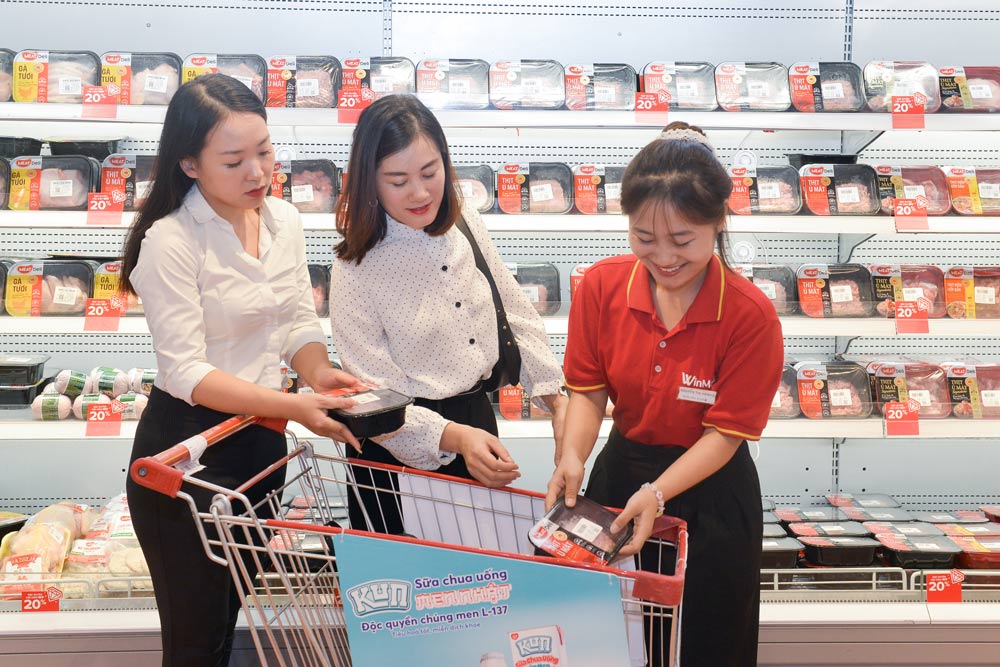According to a report by HSBC, Masan Consumer has high profit margins, stable revenue growth and outperformed its peers in the FMCG and packaged food sector in the region. From 2017-2023, Masan Consumer grew at a rate 2.2x the general market.
SSI Research's analysis report said that MCH's net revenue and net profit CAGR are 11.2% and 15.4% respectively in the period 2019-2023. SSI Research attributed these results to the internal research team's active product innovation, stable demand and solid market share growth. Of which, MCH's convenience food revenue CAGR is 16%.
Growth drivers come from premiumization strategy
With close relationships with 340,000 traditional retail partners, 6,000 modern commercial points of sale and 5 strong brands with annual revenue of over VND 2,000 billion, Masan Consumer has penetrated almost every corner of the Vietnamese market, serving 98% of Vietnamese households.
At the end of the first 9 months of 2024, Masan Consumer recorded double-digit growth in both revenue and profit. In particular, profit after tax in the third quarter and the first 9 months of 2024 increased by 14.5%, reaching VND 2,072 billion and increased by 13.8%, reaching VND 5,474 billion, respectively.
Masan Consumer’s revenue growth was driven by a premiumization strategy for large-scale categories such as Seasonings and Convenience Foods. In addition, new product initiatives were the main growth catalysts for Beverages and Home & Personal Care (HPC).

In the first 9 months of the year, these product lines brought in VND1,518 billion, contributing 7% to MCH's total revenue. This is an increase of 47% compared to the same period last year. With the new product line, the company plans to expand its target market from USD1 billion in the instant noodle industry to USD17 billion in the restaurant meal replacement (RMR) sector.
The company representative shared that premiumization is a long-term strategy of Masan Consumer, helping to expand the market share of fast-moving consumer goods (FMCG), from spices to food. This is also a way for Masan Consumer to optimize gross profit when this group generates positive profits.
In fact, sales of the Omachi product line, representing the high-end segment, increased by 24% in the third quarter and accounted for nearly 50% of total revenue in the convenience food industry. According to MCH's management, this shows that the high-end consumption trend of Vietnamese consumers is expanding.
Listed on HoSE in 2025
Masan Consumer representative said the company plans to list on HoSE in 2025. According to HSBC, the move to list on HoSE can help MCH shares improve liquidity, consistent with the company's capacity. The capacity mentioned is a stable business history with high growth, surpassing other companies in the same FMCG and packaged food industry in the region.
Many large investment funds are holding MCH shares such as Albizia Asean Tenggara Fund owning 3.8 million shares; Vietcap Securities holding 2.7 million shares and Bill & Melinda Gates Foundation Trust holding more than 1.04 million shares.

The successful IPO of Masan Consumer will help increase the valuation of Masan stocks such as MCH, MSN and this roadmap is becoming clearer with positive information from the business.
Continuously high dividends
Recently, Masan Consumer announced that December 20 is the last registration date to close the list of shareholders to pay interim dividends for 2024 at a rate of 95% in cash (1 share receives VND 9,500). The expected payment date is December 30, 2024. With 724.6 million outstanding shares, Masan Consumer will spend more than VND 6,884 billion on this dividend.

Previously, Masan Consumer spent about VND 19,000 billion to pay cash dividends in 2023 at a rate of up to 268%. The above dividends were paid in 3 installments. The total dividend in 2023 that shareholders received from Masan Consumer was 268% with a total amount of VND 19,225 billion, marking the most generous payment to shareholders since listing. Continuously paying cash dividends demonstrates the growth and sustainable profitability of the enterprise, while increasing benefits for shareholders.






